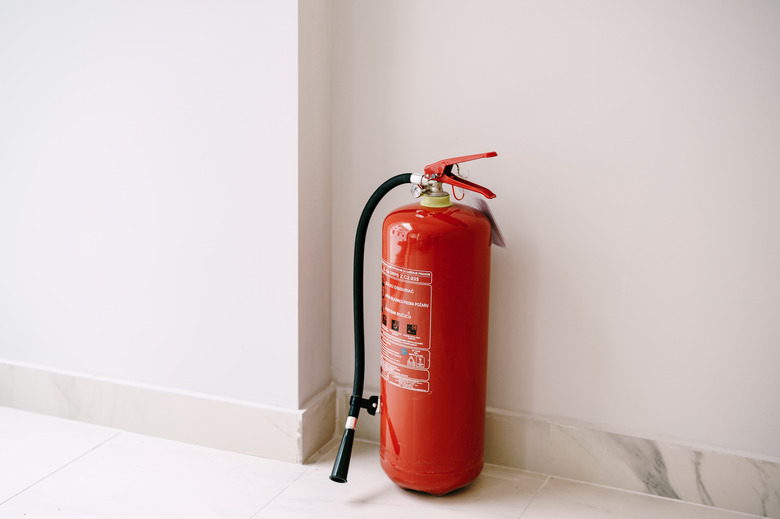Soda Acid Fire Extinguisher Information
We may receive a commission on purchases made from links.
Sodium bicarbonate (NaHCO3) (baking soda) is a substance found in all living things, regulating pH balance. Made from sodium carbonate (soda ash), soda ash is mined from trona ore. The soda ash is dissolved in a solution containing carbon dioxide. Sodium bicarbonate precipitates out naturally. Sodium bicarbonate is utilized in a multitude of applications, not the least of which is the soda acid fire extinguisher.
In their day, soda acid fire extinguishers were used to put out Class A fires. This fire class refers to burning wood, paper, cloth, and some plastics. In 1969, however, Underwriters Laboratories decommissioned these fire extinguishers in part due to issues finding replacement parts. These extinguishers were also prone to developing blockages that could prevent them from working properly, and they failed to meet pressure requirements at the time.
Soda and Acid
Soda and Acid
Fire requires oxygen and fuel in order to burn. A fire extinguisher removes or displaces the surrounding oxygen, smothering the flames. A soda acid fire extinguisher is an emergency fire protection device that can extinguish or control small fires.
Often crafted from highly polished brass or copper, the soda acid fire extinguisher is activated by turning the unit upside down, thereby dumping the baking soda into acid water (similar to the effect achieved by placing baking soda in vinegar). The combined baking soda and acid produce carbon dioxide gas to project the enclosed liquid toward the flames.
Collectible Fire Extinguishers
Collectible Fire Extinguishers
Over 70 years ago, copper or brass soda acid fire extinguishers were highly polished, coated with a thin layer of clear lacquer to preserve their brightness and shine, and then hung in offices, factories, shops, and homes. Easily accessible, these units were relied on to squelch any sudden fire eruption.
A 1940s' vintage fireblaster, the Quick Aid Fire Guard Model Soda-Acid extinguisher, manufactured by the General Pacific Corporation, has become quite collectible. They are often featured at antique and decorating stores. The Quick Aid model is a 2.5-gallon extinguisher that stands 23 inches tall and is 7 inches in diameter. Equipped with a rubber hose and nozzle and a red screw cap, the extinguisher is crafted from copper with a brass nameplate. Antique collectors value the style and craftsmanship of vintage fire extinguishers, often using them as plant stands or decor accents.
History of Soda Acid Fire Extinguishers
History of Soda Acid Fire Extinguishers
In 1886, Francois Carlier of France patented the first soda acid extinguisher, which employed a mixture of water and sodium bicarbonate with tartaric acid which produced the CO2 propellant. In 1881 a U.S. patent was filled by Almon M. Granger, who had invented another type of soda acid extinguisher that used the reaction between sulfuric acid and sodium bicarbonate to propel water onto a fire. Subsequent patents have been filed for automatic soda acid fire extinguishers that sense the presence of a fire and start a chemical reaction in the cylinder that produces and propels carbon dioxide (CO2) to smother the fire.
Homemade Fire Extinguisher
Homemade Fire Extinguisher
A simple home fire extinguisher can be made from baking soda and vinegar. There are several methods for building a simple extinguisher. Try this simple plan: All that is required is baking soda, vinegar, a glass jar, a paper towel, and masking tape.
Fill the jar half full of vinegar. Insert a hole through the lid of the jar. Fold the paper towel into a pouch or "tea bag" shape by folding in the corners and fill it with baking soda. Tape the pouch to the lid of the jar. In the case of a sudden fire, just shake the jar and point it toward the fire.
